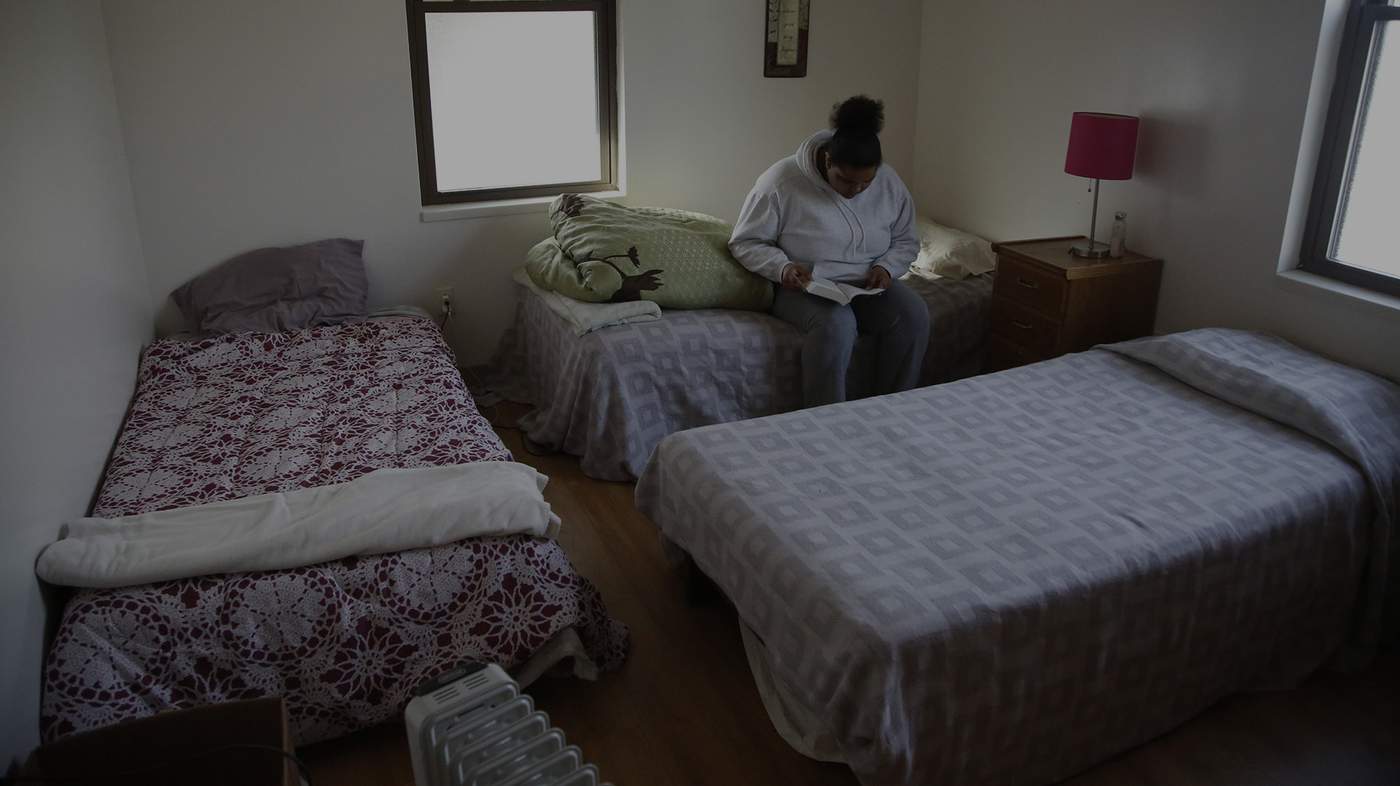Whenever temperatures dip below freezing, which happens a lot this time of year, the halls of Dayton’s two St. Vincent de Paul homeless shelters swell with men, women and children who have no other warm place to go.
Most are local, but a surprising number of the homeless travel vast distances to get here — in part, because they can’t find shelter elsewhere. More than a quarter of those who stayed in Montgomery County homeless shelters this year were from outside the county, including more than 19 percent who came from outside the region.
Finding emergency accommodation can be a challenge, an I-Team investigation found, especially for people who end up here from other communities. Differing admission standards from place to place can lead many people to shelters in Dayton, which some worry puts an unfair burden on Montgomery County services.
The non-profit Homefull, which works closely with St. Vincent to coordinate shelter services for the homeless, gathers people’s stories as part of its case management work.
Some people say they came here for work and need a place to stay until they get on their feet. Others say they came from other counties — even Columbus or Detroit — because the shelters there were full. Some are displaced within the region, sometimes after they are discharged from a hospital and cabbed to a shelter in Dayton.
“It’s our job. We’re going to be making sure they get every resource they’re due,” said Homefull Executive Director Tina Patterson. But a regional approach to the problem should be explored, she believes.
“We want to serve people in the best possible way, and I also want to be a very good steward of our resources,” she said. “If we are going to be the region’s homeless shelter, we should have that expectation of funding.”
Resources vary widely from one county to the next. As the region’s first snow fell earlier this month, an I-Team reporter called shelters in eight counties and found many couldn’t guarantee a room that night. Several said they could only accommodate people who live in that county.
The Hamilton County homeless hotline said the county’s shelters only had room for a male under age 24. Greene County has resources available for homeless individuals, but no emergency drop-in shelter for single men or women.
Shelter workers and volunteers apologized as they told the reporter there was no room.
“To my knowledge there’s no open beds in Butler County right now,” said a woman at Serve City CHOSEN in Hamilton.
She was partially right. The only other shelter in Hamilton had room for a mother with children — if she could provide an ID with a Butler County address and Social Security cards for her and the kids. But there was no room for a father with kids, or a man or woman by themselves.
Steve Sparks, evening manager for Serve City CHOSEN, said the shelter can house up to 40 men and 12 women.
“The last couple weeks we’ve been full,” he said, though there was space last Wednesday.
If the temperature drops below 20 degrees, Sparks said the shelter opens up the dining area to accommodate more visitors. The Butler County Jail also opens its lobby to those seeking warmth in cold weather.
Middletown’s women’s shelter, Hope House for Women and Children, said it had a waiting list when a reporter called.
“It may be three or four days before we can even consider someone,” a woman there said.
The men’s shelter also was full, though the man who answered the phone said it may open the chapel for the night for single men.
Clark County’s shelters said they were at capacity but had “overflow” room available and could, if necessary, put a family up in a hotel.
Many area families will wake up Christmas morning wishing more than anything for a place to call home.
“Holidays are very hard,” said Tonya Jouett, who is staying with her two teenage daughters at the Schneider House of Hope shelter for families in Xenia.
Brandi Bentley and her family, including their two children, also ended up at Schneider House temporarily after losing their home in the wildfires that tore through the Gatlinburg, Tenn., area earlier this month.
“We moved up here with my husband’s family, and we ended up not being able to stay with her four days after we got here,” Bentley said. “And we found these lovely people at this place, and they’ve really helped us out a lot.”
The Bentleys moved out of the shelter Thursday and will spend Christmas in their new home.
There is no one reason why people become homeless for short or long periods, but those who do are grateful there are services and places like Schneider House available to help.
Jouett had an apartment in Dayton but lost it because of health issues. She is now working through the process to get subsidized housing she can afford on her meager disability check. She moved her family to Xenia to be closer to the girls’ father.
A local church donated presents for the kids. Students from Cedarville University decked the halls with three Christmas trees. Staff and volunteers with the Interfaith Hospitality Network run the shelter.
“They’re so selfless in everything they do,” she said. “They’re just wonderful people.”
Being in a shelter is “definitely tolerable compared to being outside,” Jouett said. “It’s so very cold and Greene County really struggles with the homeless, and overcrowding and not having shelters for single men and women is very sad.”
Greene County has family shelters and resources to help homeless people, but lacks a drop-in shelter for homeless individuals.
Greene County Administrator Brandon Huddleston said there is work underway to establish a shelter, and he would be open to talking to Montgomery County — which has abundant shelter space — about how best to serve the region’s homeless.
“If we could find a way to partner with them to serve our residents, we would certainly be open to the discussion,” he said.

